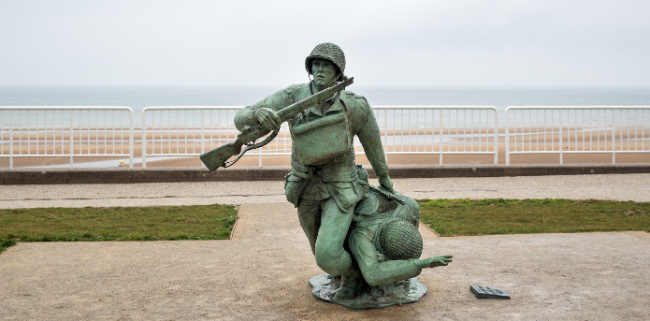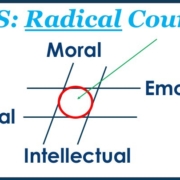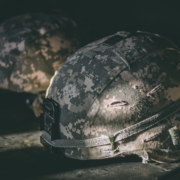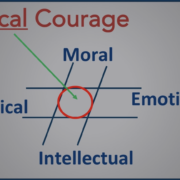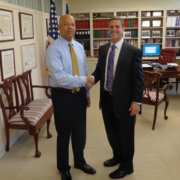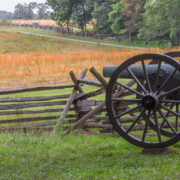A D-Day Special: Encouraging Initiative Through History
Celebrating D-Day’s 80th anniversary
“Everyone waits for me to tell them what to do,” Jane told me. “How do I get people to take initiative?”
“Freelancing has burned us before, so I keep people on a tight leash,” Henry said. “We’re making fewer mistakes but too slow to recognize and seize opportunities.”
Jane and Henry show different sides of the challenge. Jane wants people to experiment and try new things, but they are afraid to do so. Henry had people go 100 miles per hour in the wrong direction, wasting time and resources, so he restricted their latitude and now they sit on their hands. He’s not sure how to strike the right balance.
Do you struggle with employee initiative, too?
The secret is to promote disciplined initiative, and D-Day’s leader, General Dwight Eisenhower, shows how you can do it, too.
Disciplined initiative occurs when people act on their own accord while advancing your organization’s Common Good (your vision, mission, goals, and standards).
This balance enables them to solve problems, innovate, and seize opportunities without the risk of freelancing, wasting time and energy moving in the wrong direction, and creating more problems than they solve.
The D-Day landings entailed the largest amphibious and airborne assaults in history. Eisenhower had to figure out how to get millions of soldiers and their equipment ashore and sustain them for months as they attacked France toward the Nazi heartland.
Success required innovations like Mulberries (artificial harbors), PLUTO (an oil “pipeline under the ocean”), a massive deception operation to fool the Nazi high command (Operation Fortitude), and the RHINO (blades on tanks to cut through hedgerows).
Eisenhower also needed leaders who could take situational initiative when plans broke down or new risks or opportunities arose. When the Utah beach landing craft went to the wrong site, Brigadier General Teddy Roosevelt, Jr. had to improvise a new plan. When the 29th division bogged down on Omaha Beach and pummeled by German fire, Brigadier General Norm Cota organized small teams to move out and destroy the bunkers.
Lt. Gen George Patton’s unique ability to coordinate air support, tanks, infantry, and artillery overwhelmed German defenses and forced their hasty retreat out of France, probably saving Paris from destruction.
How did Eisenhower promote disciplined initiative? He followed the ABCs: Agency, Back-up, and focus on the Common Good.
First, Eisenhower was clear on the Common Good (defeating Nazi Germany) and the strategy to achieve it, which included the planning to achieve the D-Day objectives. He set and enforced explicit standards on matters like cooperation (he famously fired an American Colonel for calling an allied counterpart a “British S.O.B”) and respect (he relieved Patton for assaulting his own soldiers) as well as decision-making and risk.
Second, he promoted agency by setting explicit boundaries on his subordinates’ authority. Within those boundaries, his generals were free to make decisions (as when Roosevelt improvised on Utah Beach) and innovate. When they got close to a boundary, Eisenhower expected them to report so he could provide more guidance or resources. He avoided second-guessing their decisions, even if he might have done something differently (he avoided micromanaging Montgomery as his operations bogged down near Caen).
Finally, he showed that he had his generals’ backs by taking responsibility for addressing problems and passing credit to his subordinates. When Montgomery’s operations bogged down, and people encouraged Eisenhower to relieve him, Eisenhower instead backed up his general. When pre-D-Day experiments and tests went awry, Eisenhower said he’d address the matters rather than throwing his subordinates under the bus.
He gave General Bradley and Field Marshall Montgomery the credit for D-Day, even as he penned a letter accepting responsibility if the landings failed.
Encouraging the right behaviors rather than only rewarding success was vital. Toyota does the same thing when encouraging employees to stop the assembly line if they think something is wrong. If there’s nothing wrong, Toyota rewards the behavior rather than criticizing the employee for wasting time and resources.
Contrast that thinking with how Boeing reportedly handled reports of assembly line problems.
All three elements must be in place for disciplined initiative. Without focusing on the Common Good, you risk freelancing and wasted energy (like Henry experienced). Without agency, people will sit on their hands (Jane had this challenge), and without backup, people will fear being thrown under the bus if a new idea doesn’t work.
When all three work together, you have Trust, Empowerment, and Accountability. People will report problems, offer fresh ideas, and try new things. They will take action to address unforeseen risks and opportunities, solve problems rather than live with them, and act in ways that shorten the path to success.
For more on Disciplined Initiative, see Chapter 5 in my book Leadership: The Warrior’s Art or schedule a time to meet.
P.S. Is visiting the D-Day beaches on your bucket list? I’m hosting a trip for leaders and spouses there, October 11-14. Email or DM me for more information.
